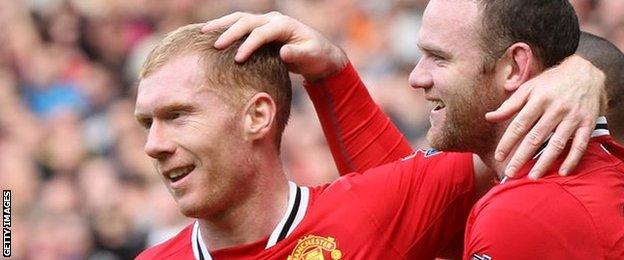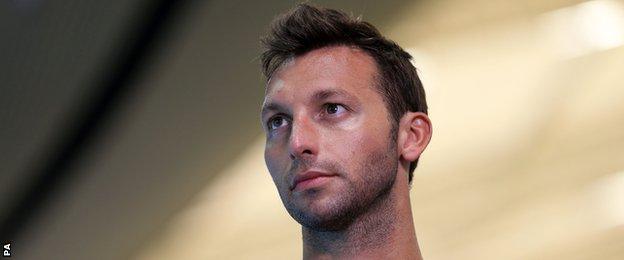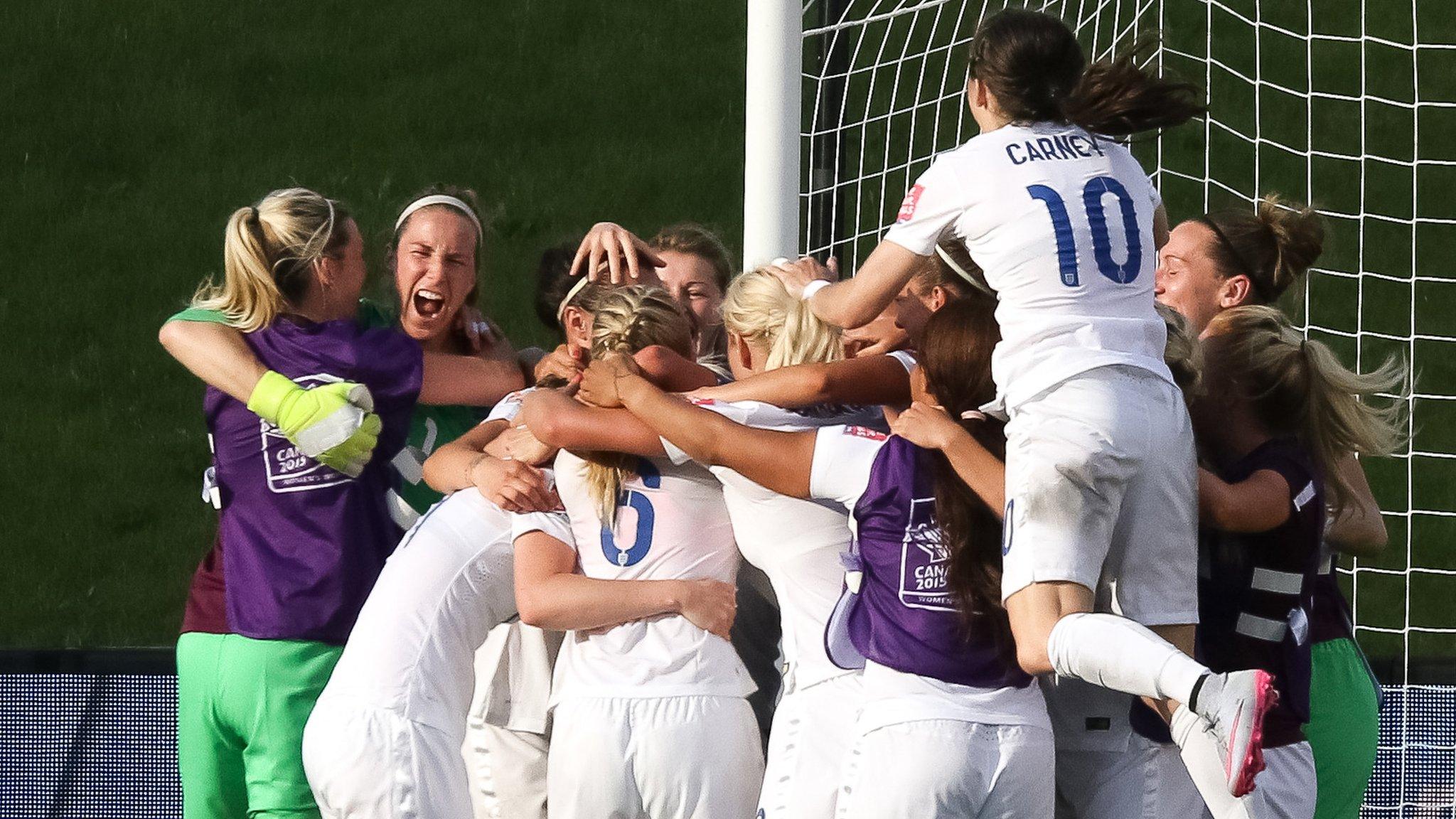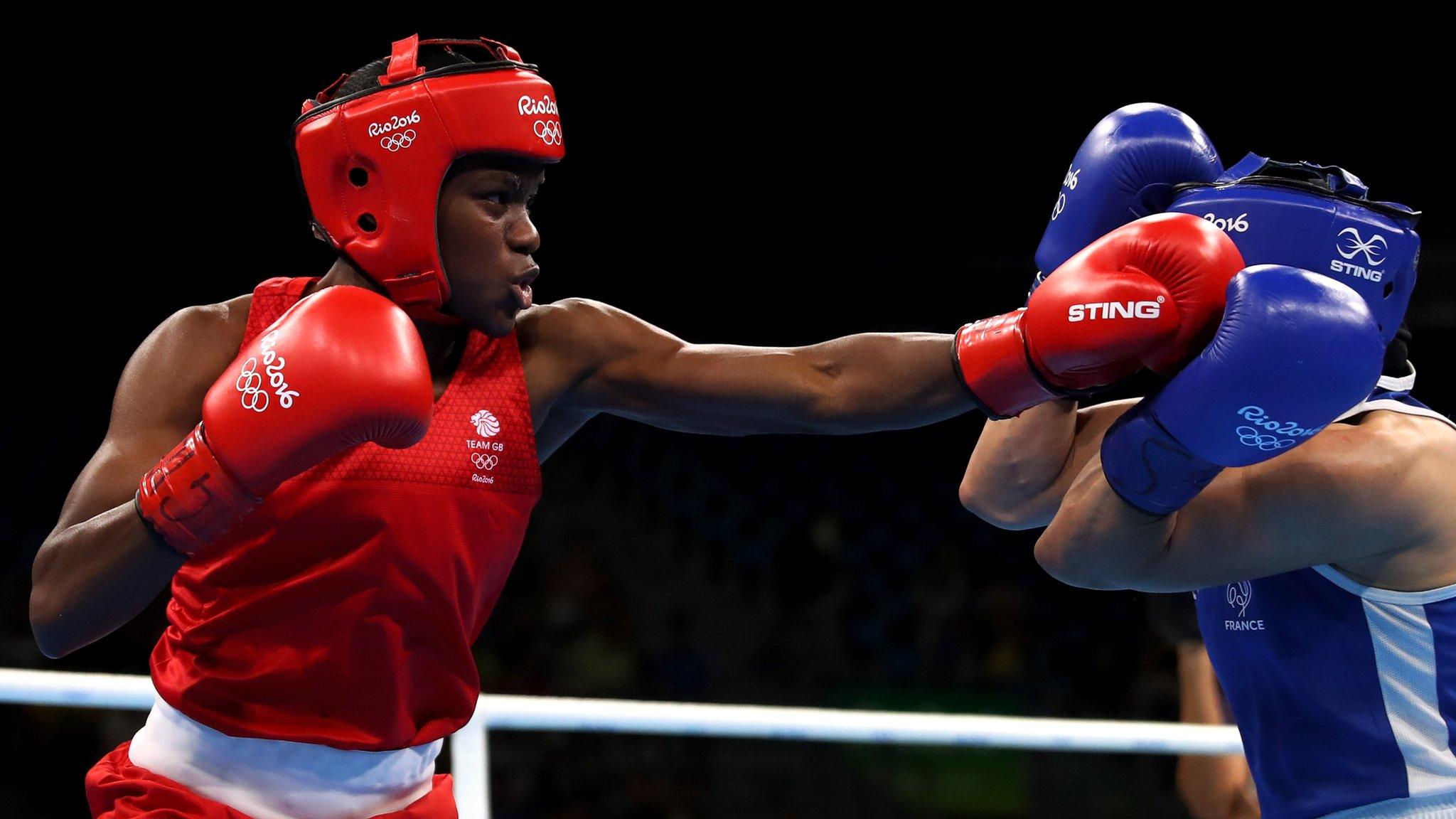Oscar De La Hoya: Does a comeback ever really work out?
- Published

Oscar De La Hoya has won 10 world titles across six different weight divisions
Was it the smell of the canvas? The animated trainer bawling instructions? The feeling of laced gloves against face?
For legendary boxer Oscar De La Hoya, a former six-weight world champion, the temptation of fighting the very best appears to have proven too much as he "seriously" considers returning to the ring.
But will the 42-year-old American join the ranks of those sports stars who enjoyed one last hurrah? Or will he be made to look like a chump?
We look at some of those who returned and assess their varying degrees of success:
Paul Scholes

Paul Scholes won 11 league titles with Manchester United
It says a lot about how highly regarded you are as a player when you are asked, nay, begged to come out of retirement.
Paul Scholes scores on Old Trafford return for Man Utd
That was the situation in January 2012 when Manchester United manager Sir Alex Ferguson realised his injury-hit midfield lacked the sort of creative spark that used to be provided by Paul Scholes. So to try to remedy the problem he invited back 37-year-old Scholes, who had retired the previous summer.
Although the former England midfielder failed to guide United to the Premier League that season, he did help them wrest back the title from Manchester City the following campaign.
Scholes also scored for the 19th consecutive league season and picked up his 99th yellow card.
Successful comeback? Yes.
Ben Johnson
Ben Johnson stripped of Olympic gold in Seoul 1988
He ran the fastest ever recorded time by a human over 100m in 1988, but was found to be cheating.
But despite his positive drugs test, there was no lifetime exile for Canada's Ben Johnson. Instead he was handed a two-year ban, stripped of his Seoul Olympic gold and world record of 9.79 seconds.
Four years later he was selected again to represent his country at the Olympics, but this time he finished last in his 100m semi-final after stumbling out of the blocks.
He also tested positive again in 1993 which, this time, resulted in a lifetime ban.
Successful comeback? No.
Martina Hingis

Martina Hingis has won 43 WTA singles titles
Come out of retirement once? Old hat. Why not do it twice?
Injury forced Swiss tennis great Hingis to hang up her racket in 2003 at the age of 23. However, she returned to the WTA Tour in 2006. She won the mixed doubles title at the Australian Open and reached the season-ending WTA Tour Championships.
However, she retired again following a positive drugs test in 2007,, external which resulted in a two-year suspension.
Hingis returned, once more, in 2013 at the age of 32 and has been successful. She reached the 2014 US Open doubles final and won this year's Australian Open mixed doubles title with Leander Paes.
Successful comeback(s)? Yes.
Pele
Brazil legend Pele retires from professional football
Having called it a day after helping his nation win three World Cups and scoring more club goals than anyone else, it would take something special to bring arguably the world's greatest player out of retirement.
"New York Cosmos?"
"Hmm..."
"$1.4m per year?"
So Pele put his boots back on in 1975, a year after quitting, to play for the Cosmos in the North American Soccer League. He actually managed three seasons with the American side and helped them win the league title in 1977. He also boosted the popularity of the sport across the Atlantic.
The Brazilian then went on to score a great goal for the Allies in the 1981 film Escape to Victory.
Successful comeback? Absolutely.
Ian Thorpe

Ian Thorpe won nine Olympic medals, including five golds
The Thorpedo. Fearless and unbeatable in three individual Olympic and five World Championships events between 2000 and 2004.
He retired in 2006 despite feeling fit enough to continue competing. But in 2011 he was bitten again by the competitive swimming bug, and in particular the thought of competing at London 2012.
At the Australian team trials, Thorpe attempted to qualify for the 100m and 200m freestyle events, which had brought him so much success in the past. But he failed to get past the semi-finals and stated that "the fairytale has turned into a nightmare".
Successful comeback? No.
- Published23 June 2015

- Published23 June 2015

- Published23 June 2015

- Published11 June 2018
